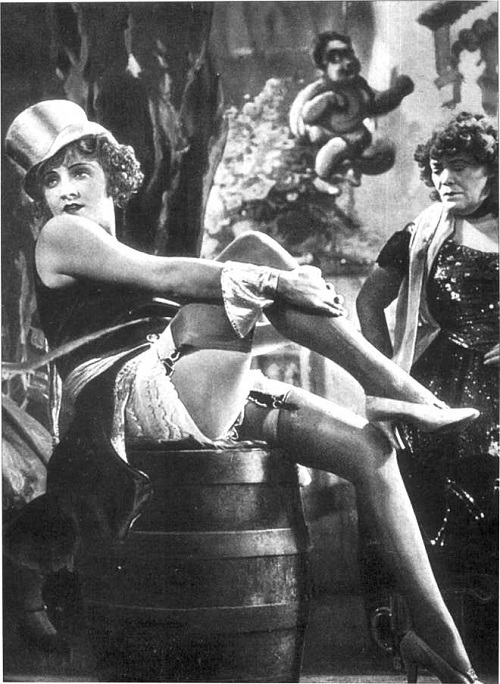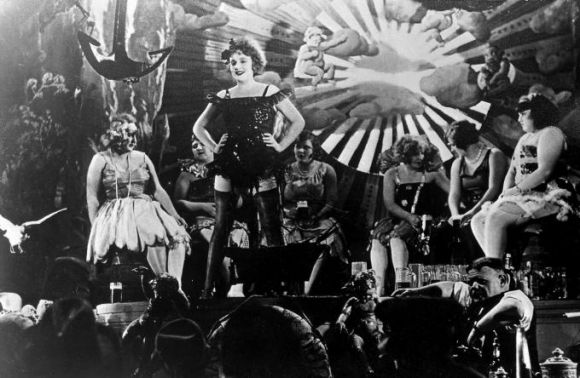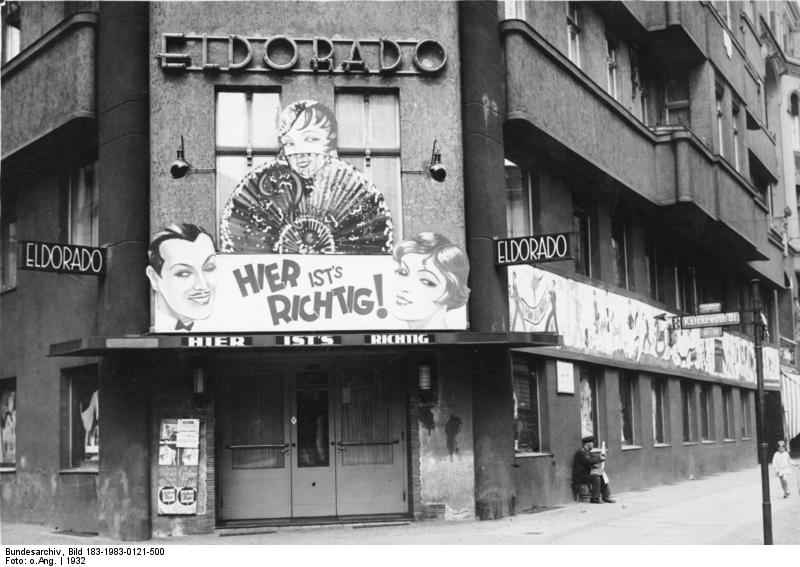
De Duitse film Der blaue Engel uit 1930, waarin Marlene Dietrich de rol speelt van Lola en haar bekendste lied: Ich bin von Kopf bis Fuss auf Liebe eingestellt, und sonst gar nichts zing spleelt zich voor een deel af in een Berlijns cabaret uit de jaren twintig.

